
Broadforking followup and other garden observations
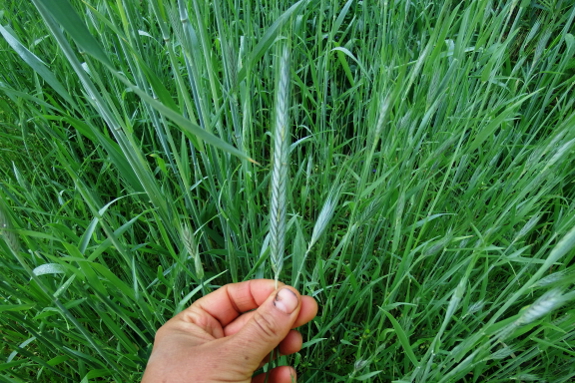
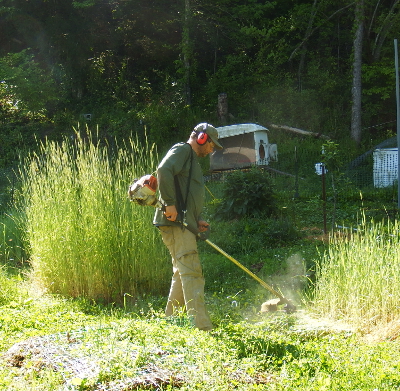 I went out with Mark to decide whether each rye bed was ready to be cut
or not, and in the process I was struck by the difference in biomass
production of various beds. My bed-by-bed approach to the garden means
that some beds are extremely rich from lots of manure and cover crops,
while other beds have managed to miss the boat on organic matter
accumulation. The latter beds produced rye plants less than half as tall
as the former beds with flower heads that are more like a quarter of
the size. Those puny beds will get to keep their rye mulch, while I'll
harvest the tops from the taller beds to use as mulch in other parts of
the garden.
I went out with Mark to decide whether each rye bed was ready to be cut
or not, and in the process I was struck by the difference in biomass
production of various beds. My bed-by-bed approach to the garden means
that some beds are extremely rich from lots of manure and cover crops,
while other beds have managed to miss the boat on organic matter
accumulation. The latter beds produced rye plants less than half as tall
as the former beds with flower heads that are more like a quarter of
the size. Those puny beds will get to keep their rye mulch, while I'll
harvest the tops from the taller beds to use as mulch in other parts of
the garden.
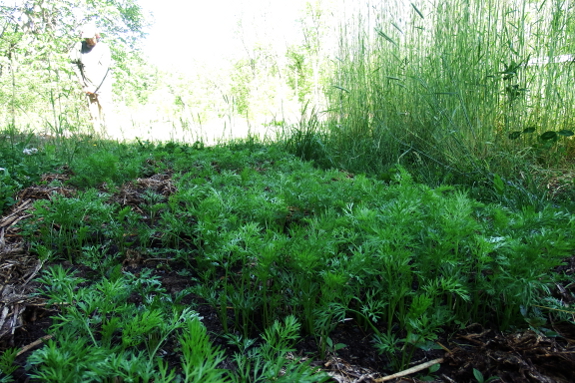
Kayla reminded me that it was also time to take the first set of measurements from our broadfork experiment. The first bed I looked at was the mangels in the photo below. The top half of the bed was broadforked while the bottom half wasn't.
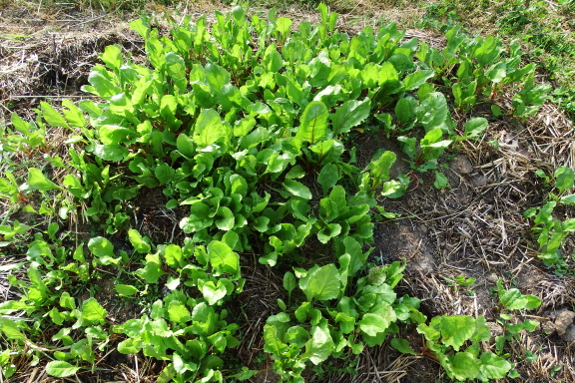
Aha! I thought. Broadforking promotes better germination! (And boy do I need to thin those seedlings.)
Then I checked out the
other beds I'd included in my first experiment. Of those, one other bed
had germinated better on the broadforked side, two beds had germinated
better on the non-broadforked side, and two beds looked the same on both
sides. I guess there's not yet any clear result of broadforking on our
root crops...but Kayla and I went ahead and broadforked half of a few
more beds anyway to test out the results on summer crops.
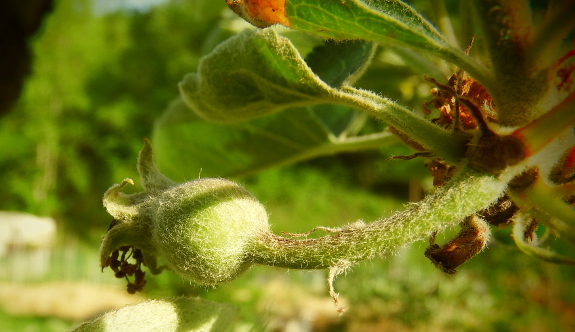
Another pressing question I'd been meaning to follow up on was --- does a low of 27 nip our fruit-tree flowers? Unfortunately, the answer appears to be yes. The developing apple 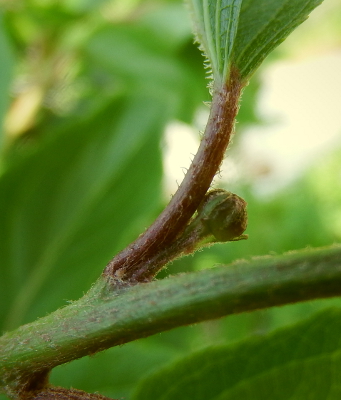 fruit pictured above is the only one I could find on all of our trees, and the pear fruits I'd been keeping my eye on have since dropped off.
fruit pictured above is the only one I could find on all of our trees, and the pear fruits I'd been keeping my eye on have since dropped off.
On the other hand, there's at least one flower bud on one of our hardy kiwis. So maybe we wrote them off for the year too soon?
I'm starting to wonder if
it would be worth making little anti-deer enclosures in other parts of
the property just to see whether a hilltop location would beat these
perilous late freezes. Of course, the smarter solution would be to
scatter max-min thermometers around all the places I'm interested in
during next year's dogwood winter before going to all the trouble of
planting fruit trees outside our core perimeter. Something to ponder on a
cold winter night....
Want more in-depth information? Browse through our books.
Or explore more posts by date or by subject.
About us: Anna Hess and Mark Hamilton spent over a decade living self-sufficiently in the mountains of Virginia before moving north to start over from scratch in the foothills of Ohio. They've experimented with permaculture, no-till gardening, trailersteading, home-based microbusinesses and much more, writing about their adventures in both blogs and books.
Want to be notified when new comments are posted on this page? Click on the RSS button after you add a comment to subscribe to the comment feed, or simply check the box beside "email replies to me" while writing your comment.

I hope you get to taste some Hardy Kiwis this year. Ours were loaded this year and with the removal of some trees are growing very quickly. https://www.flickr.com/photos/20378685@N00/17337052058/in/dateposted/